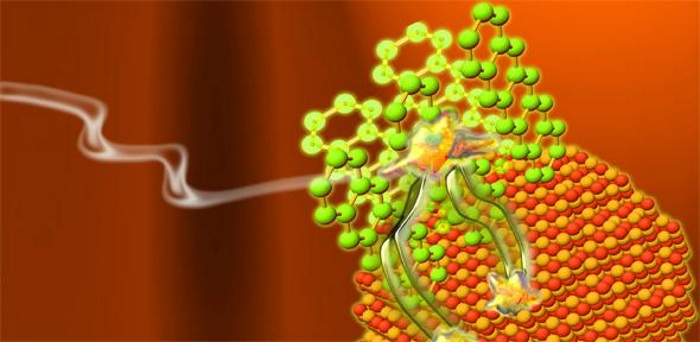Researchers from the University of Cambridge have developed a new method for harvesting energy from particles known as “dark” spin-triplet excitons (found within organic semiconductors) and transferring said current to organic semiconductors for general usage.
The method is close to 100% efficient, setting the way for hybrid solar cells that could far surpass current efficiency limits.

In the natural world, excitons are a major part of the photosynthesis process: light photos are absorbed by pigments which, in turn, generate excitons; the energy produced is then carried throughout the plant.
This process is pretty much the same in a solar cell — in a silicon semiconductor, when a photon is absorbed, one free electron is formed and subsequently extracted as current.
In pentacene, however, which is an organic semiconductor, the absorption of light actually leads to the formation of two electrons. The problem with pentacene electrons, though, is that they’re not “free” and are actually pretty difficult to extract. This is because they’re bound up within “dark” triplet exciton states.
Diving into this a little deeper, it’s first important to understand that there are two types of excitons: spin-singlet and spin-triplet. The former is bright and pretty easy to harvest in your everyday solar cells. Spin-triplet excitons, on the other hand, are dark, and the way in which the electrons spin makes it difficult to harvest the energy they’re carrying.
Despite the headache associated with harvesting the energy of spin-triplet excitons, researchers have been actively seeking a way to transfer its energy into more widely used inorganic semiconductors like solar cells.
“The key to making a better solar cell is to be able to extract the electrons from these dark triplet excitons,” said Maxim Tabachnyk of the University’s Cavendish Laboratory and lead author of the study, which was published in Nature Materials. “If we can combine materials like pentacene with conventional semiconductors like silicon, it would allow us to break through the fundamental ceiling on the efficiency of solar cells.”
To achieve this Holy Grail of combinations, the researchers used state-of-the-art femtosecond laser spectroscopy techniques. This approach led to the development of a method in which the aforementioned triplet excitons could be transferred into inorganic semiconductors with 95% efficiency. Once settled within the inorganic material, the team discovered the electrons from the triplets are easily extracted.

As light is absorbed in pentacene, the resulting singlet excitons quickly undergo fission into pairs of triplets, which can now be transferred onto inorganic nanocrystals .
“Combining the advantages of organic semiconductors, which are low cost and easily processable, with highly efficient inorganic semiconductors, could enable us to further push the efficiency of inorganic solar cells, like those made of silicon,” said Dr. Akshay Rao, who led the team behind the work.
Immediately speaking, the team will now look into how the transfer of spin-triplet excitons can be extended to other organic / inorganic systems. They are also working on a cheap organic coating that could possibly boost the power conversion efficiency of silicon solar cells.
Advertisement
Learn more about Electronic Products Magazine





